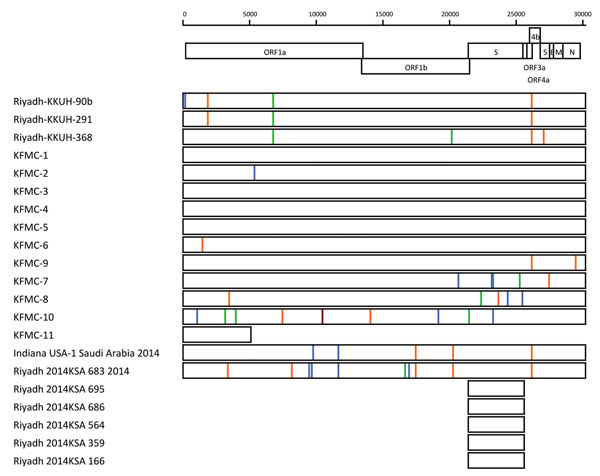Volume 21, Number 11—November 2015
Research
Molecular Epidemiology of Hospital Outbreak of Middle East Respiratory Syndrome, Riyadh, Saudi Arabia, 2014
Figure 3

Figure 3. Nucleotide differences from consensus ancestral sequences of Middle East respiratory syndrome coronavirus (MERS-CoV), Saudi Arabia, 2014, estimated at nodes C and E in a time-resolved phylogenetic tree (Figure 2). The region of the genome sequenced is indicated by the length of each box. Exact genome polymorphic nucleotide positions, sampling date, and nucleotide substitutions is shown in Technical Appendix 2. Nucleotide changes are indicated by red (A), orange (T), blue (C), and green (G) vertical bars. ORF, open reading frame; KKUH, King Khalid University Hospital; KFMC, King Fahad Medical City; KSA, Kingdom of Saudi Arabia.
1These authors contributed equally to this article.
Page created: October 16, 2015
Page updated: October 16, 2015
Page reviewed: October 16, 2015
The conclusions, findings, and opinions expressed by authors contributing to this journal do not necessarily reflect the official position of the U.S. Department of Health and Human Services, the Public Health Service, the Centers for Disease Control and Prevention, or the authors' affiliated institutions. Use of trade names is for identification only and does not imply endorsement by any of the groups named above.